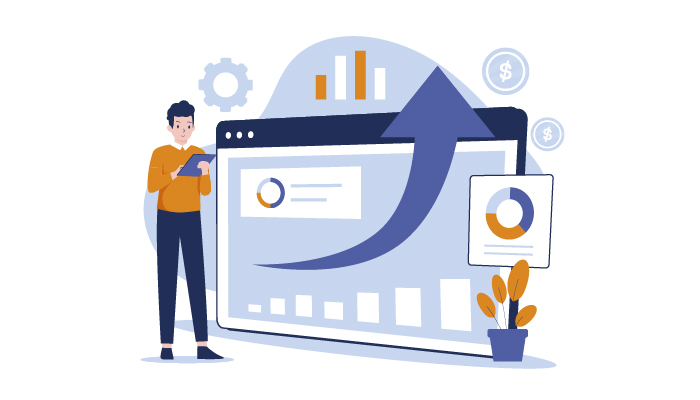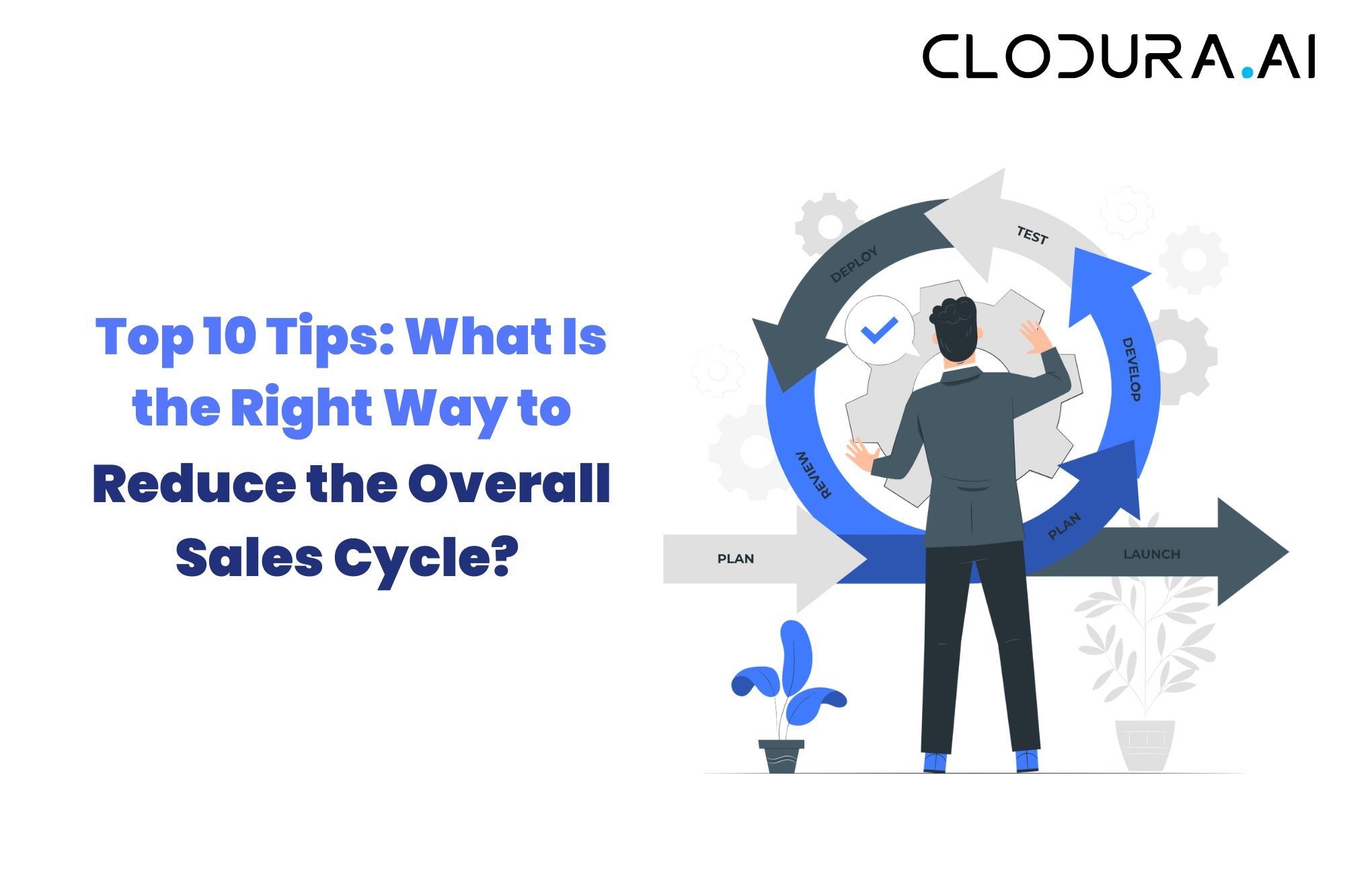In today's competitive business landscape, reducing the overall sales cycle has become a top priority for organizations of all sizes. A shorter sales cycle not only leads to increased revenue and improved cash flow but also enhances customer satisfaction and loyalty. However, achieving this goal requires a strategic approach and a thorough understanding of the necessary steps and factors involved in the process.
In this blog, we will explore various strategies and techniques to help you efficiently reduce your sales cycle and drive success in your business.
Identifying the Necessary Steps to Shorten the Sales Cycle
Before diving into the methods to streamline your sales cycle, it is crucial to identify and understand the various steps involved in your current sales process. By clearly mapping out each stage, from lead generation to closing the deal, you can gain valuable insights into potential bottlenecks and areas for improvement. This analysis will pave the way for implementing targeted strategies to reduce the overall time it takes to convert prospects into customers.
One of the first steps in shortening the sales cycle is lead generation. This involves identifying potential customers who have shown interest in your product or service. Lead generation can be done through various methods, such as online advertising, content marketing, and networking events. By analyzing your current lead generation efforts, you can determine which channels are most effective and focus your resources on those.
Once leads are generated, the next step is lead qualification. This involves determining whether a lead is a good fit for your product or service based on their needs, budget, and timeline. Lead qualification can be done through phone calls, emails, or online surveys. By efficiently qualifying leads, you can prioritize your efforts on those with the highest potential for conversion, saving time and resources.
After lead qualification, the next step is the sales presentation. This is where you showcase your product or service to the qualified leads and demonstrate how it can solve their pain points. A compelling and tailored sales presentation can significantly impact the prospect's decision-making process and shorten the sales cycle. By understanding the specific needs and challenges of each lead, you can customize your presentation to address their unique requirements.
Following the sales presentation, the negotiation and proposal stage comes into play. This is where you discuss pricing, terms, and conditions with the prospect and present a formal proposal. Effective negotiation skills and clear communication are essential during this stage to ensure a smooth transition from presentation to closing the deal. By addressing any concerns or objections the prospect may have, you can increase the likelihood of a successful negotiation and shorten the sales cycle.
Finally, the last step in the sales cycle is closing the deal. This involves obtaining the prospect's commitment to purchase your product or service. Closing techniques, such as creating a sense of urgency or offering incentives, can be employed to encourage the prospect to make a decision. By effectively closing deals, you can avoid unnecessary delays and expedite the conversion process.
By thoroughly analyzing each step of your sales cycle and implementing targeted strategies, you can significantly reduce the time it takes to convert prospects into customers. Shortening the sales cycle not only increases revenue but also improves customer satisfaction and allows for more efficient resource allocation.
So, take the time to identify the necessary steps and make the necessary improvements to streamline your sales process today!
The Benefits of Streamlining Your Sales Process
A streamlined sales process brings numerous advantages to any business. By eliminating unnecessary steps, automating repetitive tasks, and improving communication, you can significantly reduce the time and effort required to close deals. This not only allows your sales team to focus on building relationships and closing deals but also enhances customer satisfaction and improves the overall customer experience.
One of the key benefits of streamlining your sales process is the increased efficiency it brings. When you remove unnecessary steps and automate repetitive tasks, your sales team can spend more time on high-value activities, such as prospecting and engaging with potential customers. This increased efficiency leads to a higher number of deals closed in a shorter amount of time, ultimately driving revenue growth for your business.
Another advantage of streamlining your sales process is the improved accuracy and consistency it brings. By automating tasks like data entry and document generation, you reduce the chances of human error and ensure that all customer information is captured accurately. This not only saves time but also improves the overall quality of your sales interactions, leading to more satisfied customers and higher customer retention rates.
Streamlining your sales process also enables better collaboration and communication within your sales team. By implementing a centralized CRM system, for example, all team members can access and update customer information in real-time. This eliminates the need for back-and-forth emails or phone calls, streamlining the communication process and ensuring that everyone is on the same page. Improved collaboration leads to better teamwork, increased productivity, and ultimately, more successful sales outcomes.
Furthermore, a streamlined sales process allows for better tracking and analysis of sales data. With the right tools and systems in place, you can gather valuable insights into your sales performance, identify bottlenecks, and make data-driven decisions to optimize your sales process. By continuously monitoring and analyzing your sales data, you can identify trends, spot opportunities for improvement, and adapt your strategies, accordingly, leading to more effective sales efforts and better business results.
Lastly, streamlining your sales process has a positive impact on customer satisfaction and the overall customer experience. By reducing the time and effort required to close deals, you make it easier for customers to do business with you. This, coupled with accurate and consistent communication, leads to a smoother and more pleasant buying experience. Satisfied customers are more likely to become repeat customers and refer your business to others, contributing to long-term growth and success.

Utilizing Technology to Improve Your Sales Cycle
In today's digital age, leveraging technology is essential for optimizing your sales cycle. Implementing customer relationship management (CRM) software can streamline your lead management, automate tasks, and provide valuable insights into customer behavior and preferences.
CRM software is a powerful tool that enables businesses to effectively manage their customer relationships. With CRM, you can easily track and organize your leads, ensuring that no potential customer falls through the cracks. The software allows you to capture and store important customer information, such as contact details, purchase history, and communication preferences. By having all this information in one centralized location, you can easily access it whenever you need it, allowing for more personalized and targeted sales efforts.
One of the key benefits of CRM software is its ability to automate tasks. With automation, you can save time and effort by setting up workflows and triggers that automatically perform certain actions based on predefined rules. For example, you can set up automated email campaigns that are triggered when a lead reaches a certain stage in the sales cycle. This not only saves you time but also ensures that your leads receive timely and relevant information, increasing the chances of conversion.
Another advantage of CRM software is the valuable insights it provides into customer behavior and preferences. By analyzing data such as purchase history, website interactions, and social media engagement, you can gain a deeper understanding of your customers' needs and preferences. This information can then be used to tailor your sales approach, making it more personalized and effective. For example, if you notice that a particular customer frequently purchases a specific product, you can recommend related products or offer special promotions to encourage repeat purchases.
Additionally, using communication tools such as email marketing software and video conferencing platforms can enhance collaboration and accelerate the sales process. Email marketing software allows you to create and send targeted email campaigns to your leads and customers. With features like segmentation and personalization, you can ensure that your messages are relevant and engaging. Video conferencing platforms, on the other hand, enable you to have face-to-face meetings with your prospects and clients, regardless of their location. This not only saves time and travel expenses but also allows for more meaningful and interactive conversations.
Overall, leveraging technology is crucial for improving your sales cycle. By implementing CRM software, you can streamline your lead management, automate tasks, and gain valuable insights into customer behavior. Additionally, using communication tools like email marketing software and video conferencing platforms can enhance collaboration and accelerate the sales process. Embracing these technological advancements will not only optimize your sales efforts but also help you stay ahead in today's competitive business landscape.
Understanding the Complexities of the Sales Cycle
Understanding the complexities of the sales cycle is key to reducing its overall duration. Here is a point-by-point breakdown of the factors that can influence the sales cycle and how to mitigate them:
External factors-
● Market conditions:
Economic downturns, changes in government regulations, and other external factors can impact customer spending and buying behavior. To mitigate these factors, it is important to stay informed of market trends and adjust your sales strategy accordingly. For example, if you are selling enterprise software, you may need to focus on longer-term sales cycles and more consultative approaches during times of economic uncertainty.
● Customer buying behavior:
Customers are becoming more informed and demanding, and they have more choices than ever before. This means that they are taking longer to make purchasing decisions. To mitigate this, you need to focus on building relationships with potential customers and providing them with the information they need to make informed decisions. You should also be prepared to answer their questions and address their concerns throughout the sales process.
● Industry trends:
Technological advancements, new business models, and other industry trends can also impact the sales cycle. For example, the rise of e-commerce has disrupted traditional sales channels and made it easier for customers to compare prices and buy products online. To mitigate this, you need to be adaptable and willing to change your sales strategy as needed. For example, you may need to invest in online sales and marketing channels to reach your target customers.
Internal factors-
● Product or service complexity:
The more complex your product or service, the longer the sales cycle is likely to be. This is because customers will need more time to understand the product or service, evaluate its value, and make a purchasing decision. To mitigate this, you need to focus on simplifying your sales process and providing potential customers with easy-to-understand information about your product or service. You should also be prepared to offer demos, trials, and other resources to help potential customers evaluate your product or service and make an informed decision.
● Sales team capabilities:
The skills and experience of your sales team can also impact the length of the sales cycle. If your sales team is not well-trained or does not have the necessary experience, it may take them longer to close deals. To mitigate this, you need to invest in training and development for your sales team. You should also provide them with the resources and support they need to be successful.
● Sales process:
Your sales process should be well-defined and efficient. If your sales process is complex or inefficient, it can add unnecessary time to the sales cycle. To mitigate this, you should review your sales process regularly and identify ways to improve it. You should also use technology to automate tasks and streamline your sales process.
By understanding the complexities of the sales cycle and implementing strategies to mitigate them, you can reduce the overall duration of the sales cycle and close more deals.
Establishing Clear Objectives to Reduce the Sales Cycle
Setting clear objectives is crucial when aiming to reduce your sales cycle. By defining specific goals, such as reducing the time from initial contact to contract signing or improving the conversion rate at each stage, you can create a roadmap for success. These objectives provide your sales team with a clear focus and direction, encouraging them to adopt efficient practices and prioritize activities that directly contribute to shortening the sales cycle.
Leveraging Automation to Optimize Your Sales Cycle
Automation is a powerful tool that can revolutionize your sales process and accelerate the overall cycle. By automating repetitive tasks, such as lead nurturing emails, appointment scheduling, and follow-up reminders, you can free up valuable time for your sales team to focus on higher-value activities. Furthermore, automating data entry and analysis allows you to gain real-time insights into your sales performance and make data-driven decisions.
Crafting an Effective Sales Strategy to Shorten the Cycle
A well-defined sales strategy plays a pivotal role in reducing the sales cycle. By understanding your target audience, their pain points, and decision-making criteria, you can tailor your sales approach and messaging to resonate with them. Additionally, incorporating sales techniques such as personalized outreach, value-based selling, and effective objection handling can expedite the buying process and close deals more efficiently.
Analyzing Your Sales Cycles to Identify Bottlenecks
1. Identify key metrics to track. The specific metrics that you track will vary depending on your industry and sales process. However, some general metrics to consider include:
|
2. Collect and analyze data. Once you have identified the key metrics to track, you need to collect and analyze data on your sales cycles. This data can be collected from your CRM system, sales pipeline management tool, or other sales data sources.
3. Identify bottlenecks. Once you have analyzed your data, you can start to identify bottlenecks in your sales cycle. A bottleneck is any stage of the sales funnel where leads are getting stuck or where the conversion rate is low.
4. Investigate the root cause of bottlenecks. Once you have identified bottlenecks, you need to investigate the root cause of the problem. This could be due to a variety of factors, such as:
|
5. Develop strategies to address bottlenecks. Once you have identified the root cause of each bottleneck, you can develop strategies to address them. For example, if your lead pool is poorly qualified, you need to implement a better lead qualification process. If your sales process is too complex, you need to simplify it. If your sales team is using inefficient tools and processes, you need to invest in better tools and processes. And if your sales team needs more training and support, you need to provide them with the resources they need to be successful.
6. Continuously monitor and optimize your sales cycle. Once you have implemented strategies to address bottlenecks, you need to continuously monitor and optimize your sales cycle. This will help you to identify new bottlenecks and ensure that your sales process is always running as efficiently as possible.
By following these steps, you can use data-driven insights to identify bottlenecks in your sales cycle and develop strategies to overcome them. This will help you to reduce the sales cycle and close more deals.
Establishing Metrics to Measure the Effectiveness of Your Sales Cycle
Establishing relevant metrics to measure the effectiveness of your sales cycle is crucial for consistent improvement. Key performance indicators (KPIs) such as the average length of the sales cycle, win rate, and customer satisfaction scores provide valuable insights into the efficiency and impact of your sales process. By tracking these metrics, you can monitor your progress, identify trends, and make informed decisions to further optimize your sales cycle.
Understanding the Role of Customer Satisfaction in Reducing the Sales Cycle
Customer satisfaction plays a pivotal role in shortening the sales cycle. Satisfied customers are more likely to make repeat purchases, refer your business to others, and provide positive reviews and testimonials. By prioritizing customer satisfaction throughout the sales process and beyond, you can foster long-term relationships, streamline future sales engagements, and reduce the overall time it takes to convert leads into loyal customers.
To Wrap Up,
Reducing the overall sales cycle is a critical objective for businesses aiming to drive success in today's fast-paced marketplace. By identifying the necessary steps, streamlining your sales process, utilizing technology, understanding the complexities, setting clear objectives, leveraging automation, crafting an effective sales strategy, analyzing and optimizing, establishing relevant metrics, and prioritizing customer satisfaction, you can effectively shorten your sales cycle and achieve sustainable growth and profitability.
FAQs
Q. What is a sales cycle?
A sales cycle is the series of stages a potential customer goes through before making a purchase.
Q. Why is reducing the sales cycle important?
Shortening the sales cycle increases revenue, cuts costs, and improves customer satisfaction.
Q. What role do customer relationships play in reducing the sales cycle?
Strong customer relationships can expedite sales by building trust and reducing decision-making time.
Q. How can market conditions affect the sales cycle?
Market conditions, like demand fluctuations, can impact the length of the sales cycle.
Q. What are some effective strategies to shorten the sales cycle?
Strategies include better lead qualification, streamlined processes, and personalized marketing.


